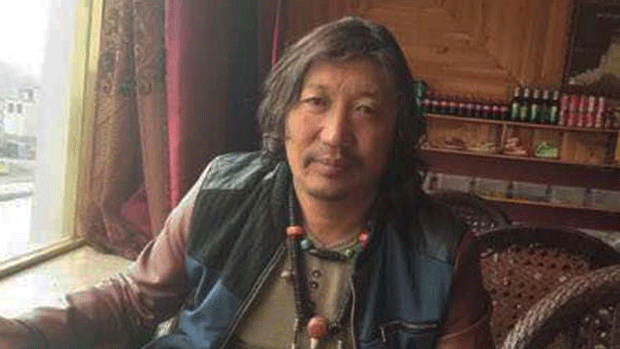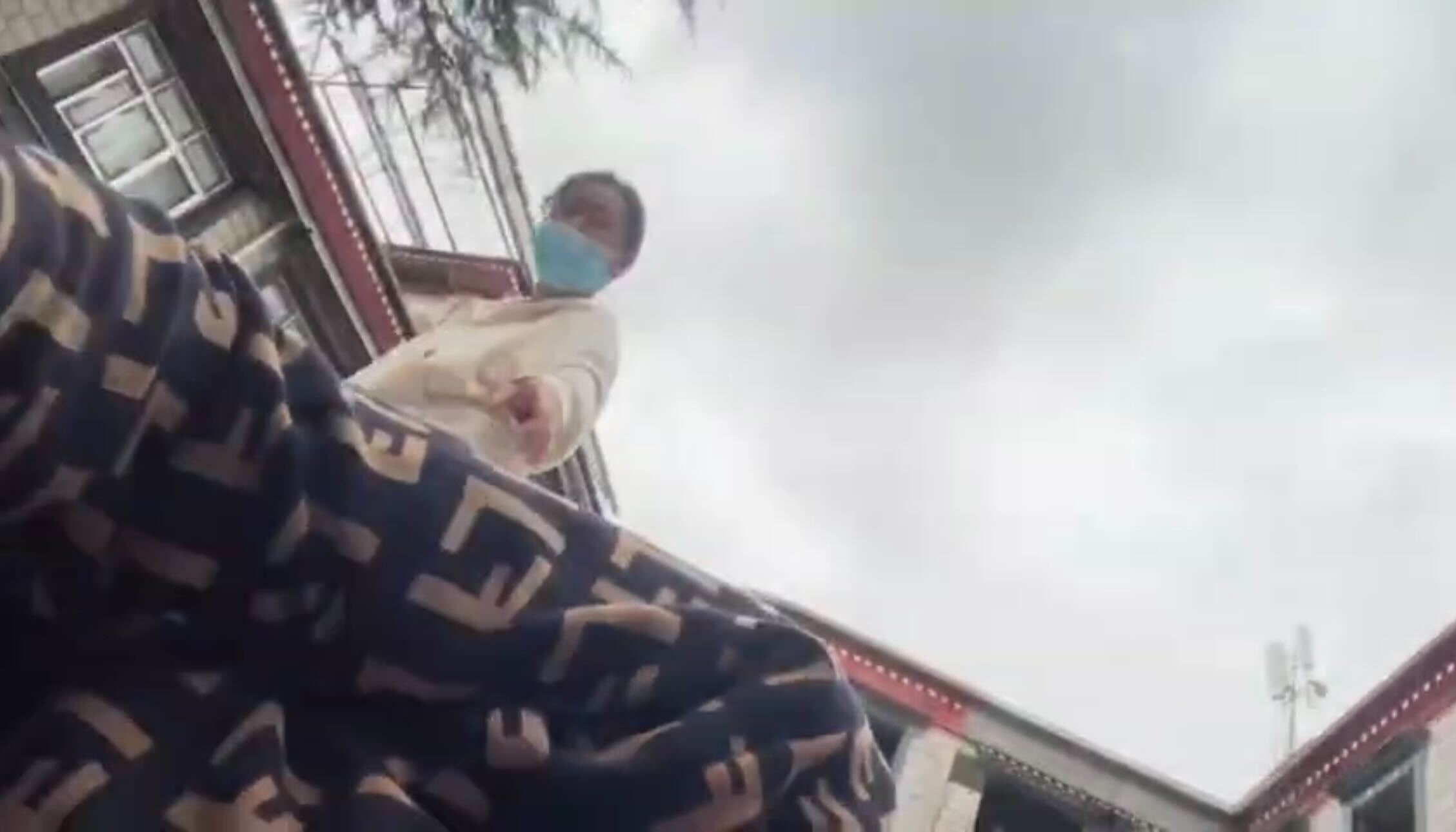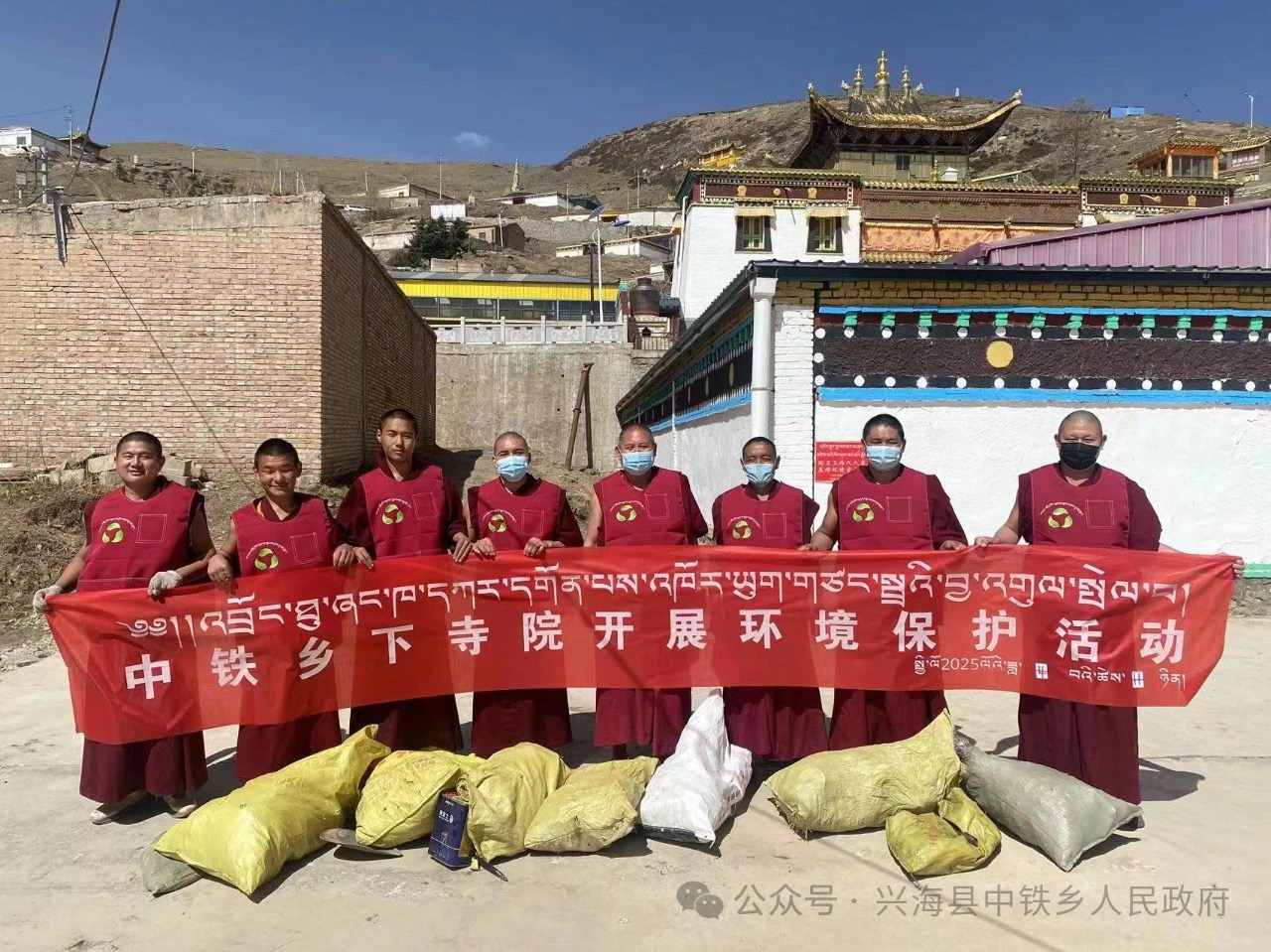
Concerns from Tibetan exiles and experts about the function of the Lhasa-Nyingtri railway line have been confirmed following a report from Chinese state media
After years of public announcements and insistence by Chinese authorities that the railway was being constructed principally for the benefit of the local people and tourists, the Global Times, an official mouthpiece of the Chinese government, confirmed on 4 August that the Lhasa-Nyingtri (Ch: Nyingchi) railway was also being used for military transport missions. Unnamed analysts were cited describing it as “a move that will boost the capability of the People’s Liberation Army (PLA)”. Video and news reports released on 4 August do not mention where the exercise field of the traveling military armies is. They are only shown traveling with backpacks onto the train, and later marching on a train station platform under a red banner that read, “ Warm-hearted congratulations on the 70th anniversary of peaceful liberation of Tibet”.
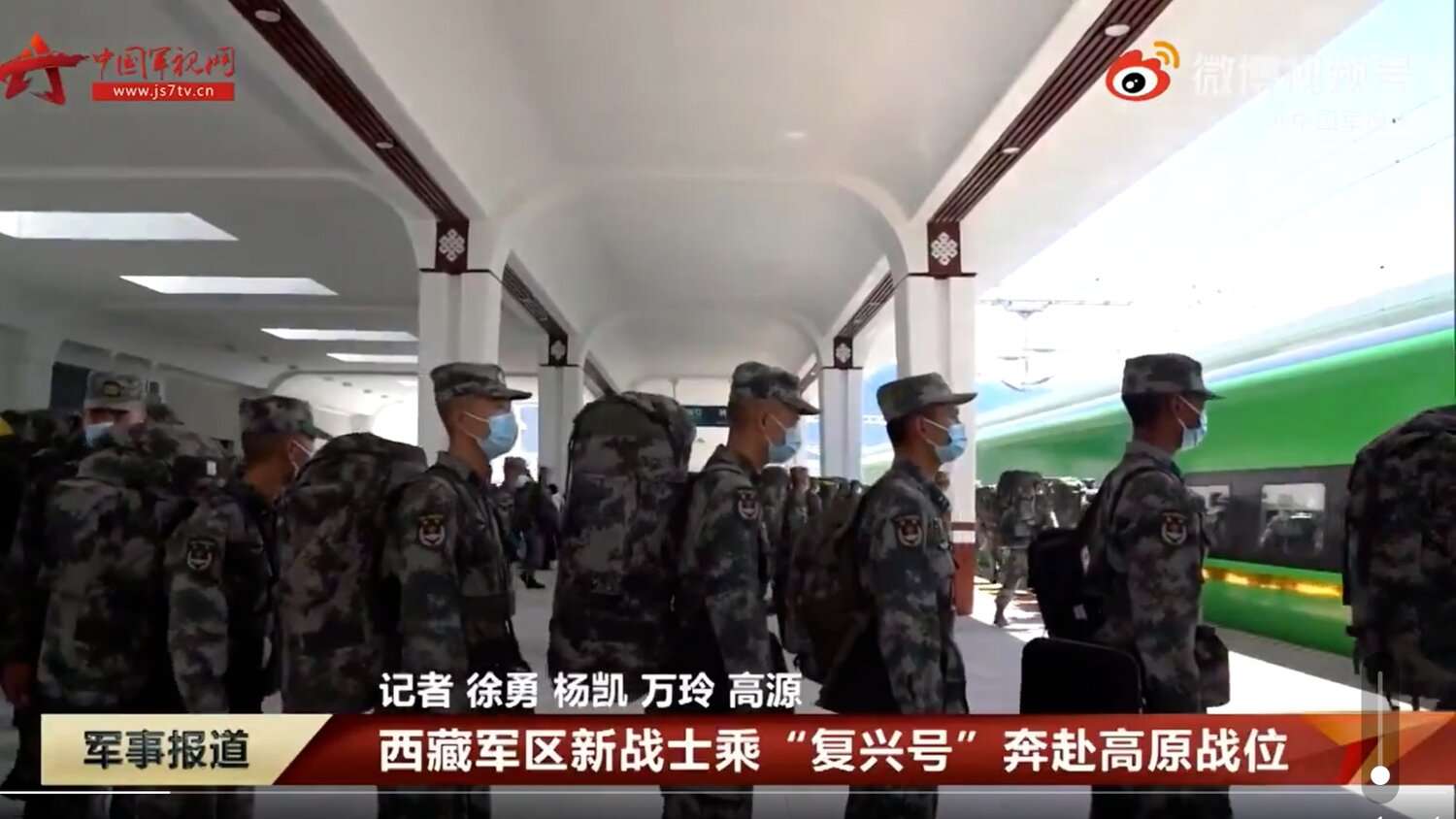
Screenshot of People’s Liberation Army embarking on Lhasa-Nyingtri Railway Image source: js7tv.cn
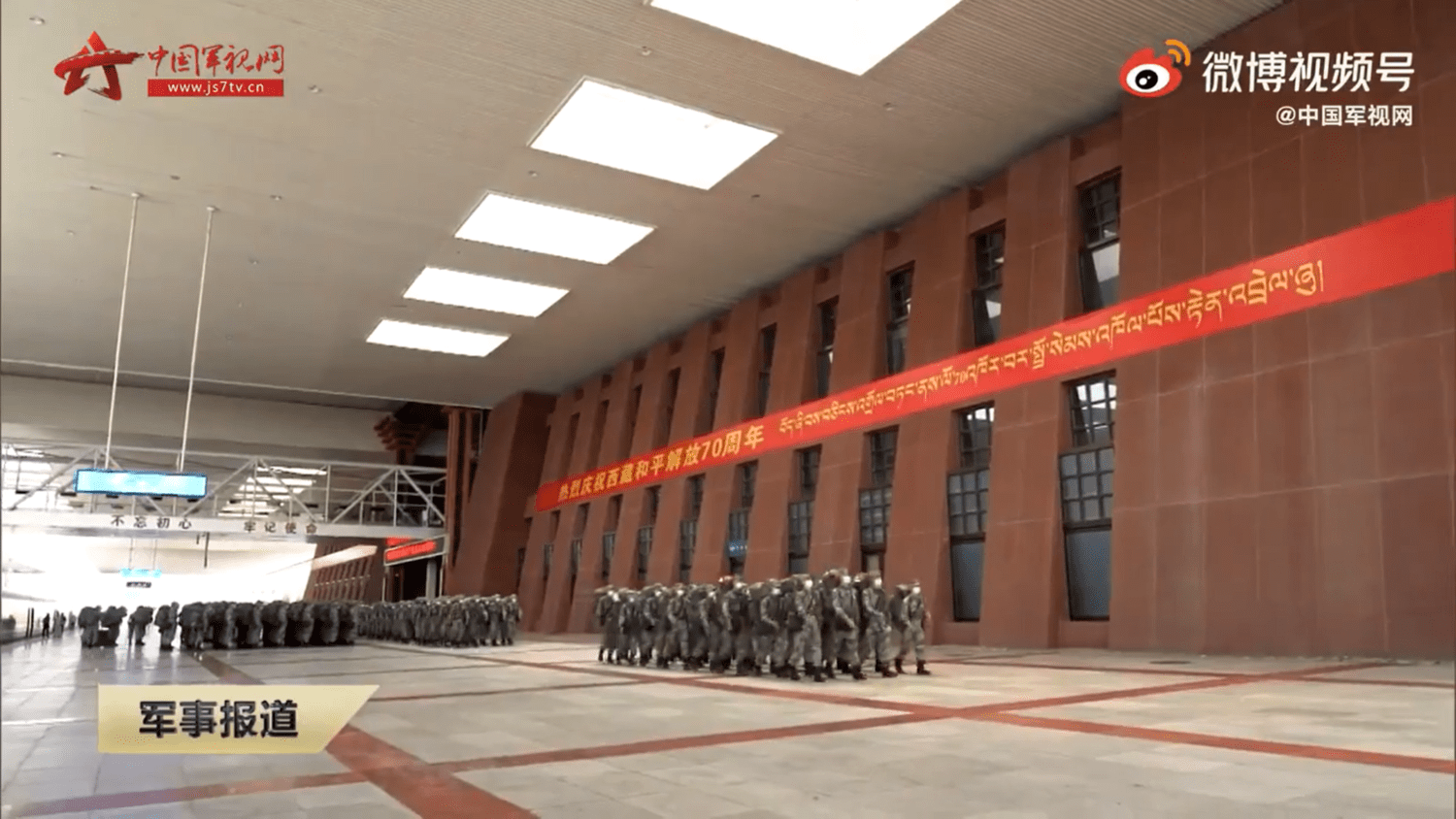
Screenshot of troops of People’s Liberation Army marching on a Lhasa-Nyingtri train station platform Image source: js7tv.cn
On 26 July, one month after the operation of the railway line started, Global Times reported that China Railway, the state railway company, sent a statement in which it proclaimed 106,000 passenger trips in the first month of operation with a daily average of 3,500 passengers per day. The report also stated the railway line served an area of 226,000 square kilometers, covering 18.4 percent of Tibet’s entire landmass. It also added that “more than 1.3 million people directly benefit from the latest extension of China’s rail network.”
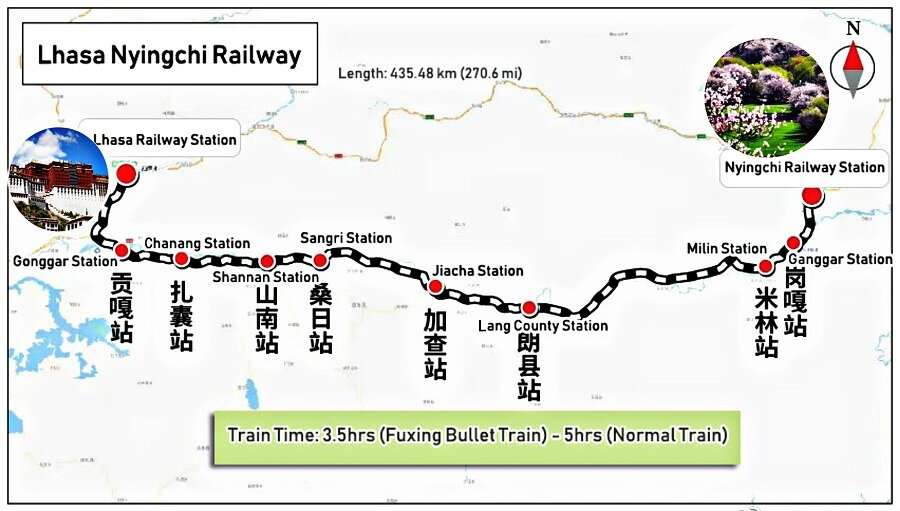
Train stations of Lhasa-Nyingtri Railway
Lhasa-Nyingtri Railway
Lhasa-Nyingtri railway is a high-speed electrified railway connecting Tibet’s capital city of Lhasa and Nyingtri in the Tibet Autonomous Region. This important segment of the Sichuan-Tibet railway will be further extended to connect to the other terminus of the Ya’an-Chengdu railway, which became operational on 28 December 2018. Construction of the Lhasa-Nyingtri railway began on 19 December 2014 with an estimated cost budget of 36.6 billion yuan ($6 billion). After its completion, it was put into operation on 25 June 2021. The total length is 435.48 kilometers, and the top speed is 160 kilometers per hour.
In parallel with the priorities of infrastructure construction in Tibet, the planning of railway and road construction runs through the key border regions, strategically enhancing Chinese control of natural resources and the ability of the military to travel throughout Tibet.
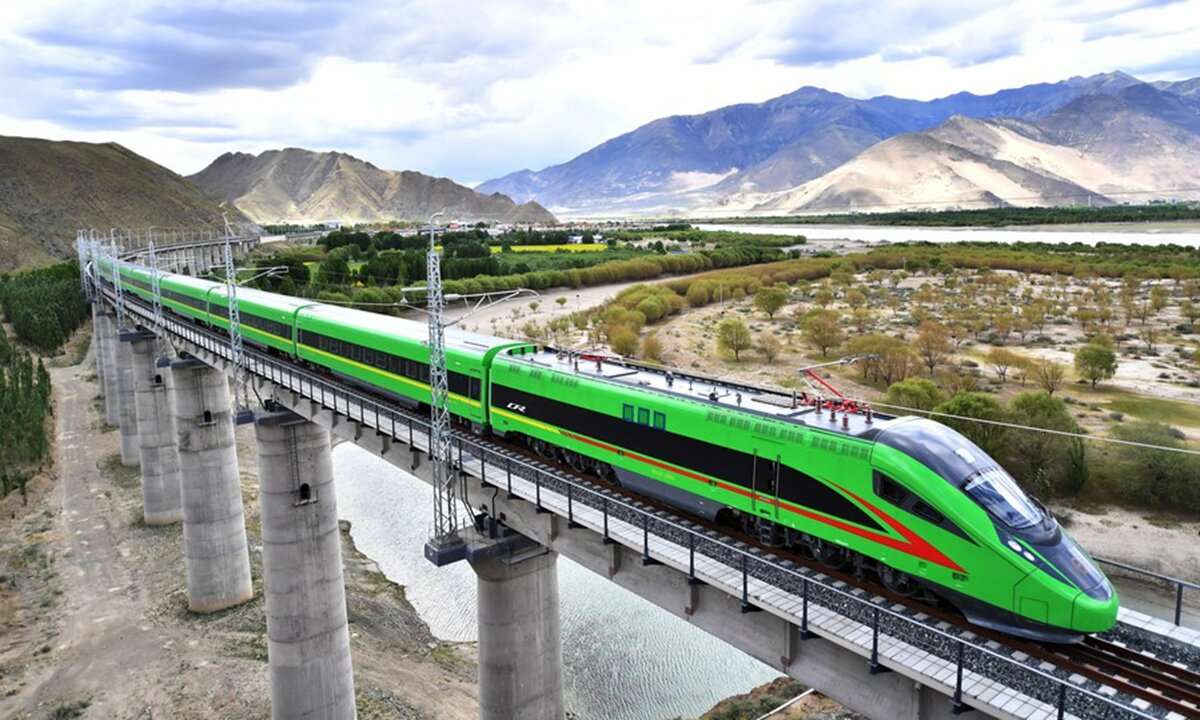
Trial run of Fuxing bullet train on the Lhasa-Nyingchi railway in Lhoka (Ch:Shannan), southwest Tibet Autonomous Region, June 16, 2021 Image source: Xinhua
Nyingtri is located in a strategically important area bordering Arunachal Pradesh in India. After being militarily occupied in the 1950s by the PLA, it also saw administrative reorganisation and renaming in Chinese. The administrative seat of Nyingtri is called Bayi in Chinese, meaning eight one, in reference to the PLA’s creation on 1 August 1927.
Three weeks after the Chinese Communist Party’s centenary in Beijing, instead of first visiting Lhasa, the capital city of Tibet, Chinese President Xi Jinping flew into Nyingtri on 21 July on an unannounced visit. He inspected the overall railway planning and took the high-speed train to Lhasa the next day.
Military prowess and Recruitment on border areas
The following day, the Chinese HJ12 man-portable anti-tank missile reportedly made its debut in an exercise organised by the People’s Liberation Army’s Tibet Military Command on the Tibetan plateau. The Global Times and Tibet Military Region’s official WeChat account both reported that this missile can destroy any main battle tank in the world.

An army of People’s Liberation Army carrying HJ12 man-portable anti-tank missile Source: hk01.com
On 23 July, Xi met representatives of the troops stationed in Lhasa. He emphasised the implementation of the Chinese Communist Party’s guiding thought of strengthening the army in the new era, implementing the military strategy of the new era, carry forward ”old Tibet spirit”, comprehensively strengthen the military training and preparation. The four key messages of his trip regarding Tibet’s governance were maintaining stability, high-quality development, ecological protection, and border-area consolidation.
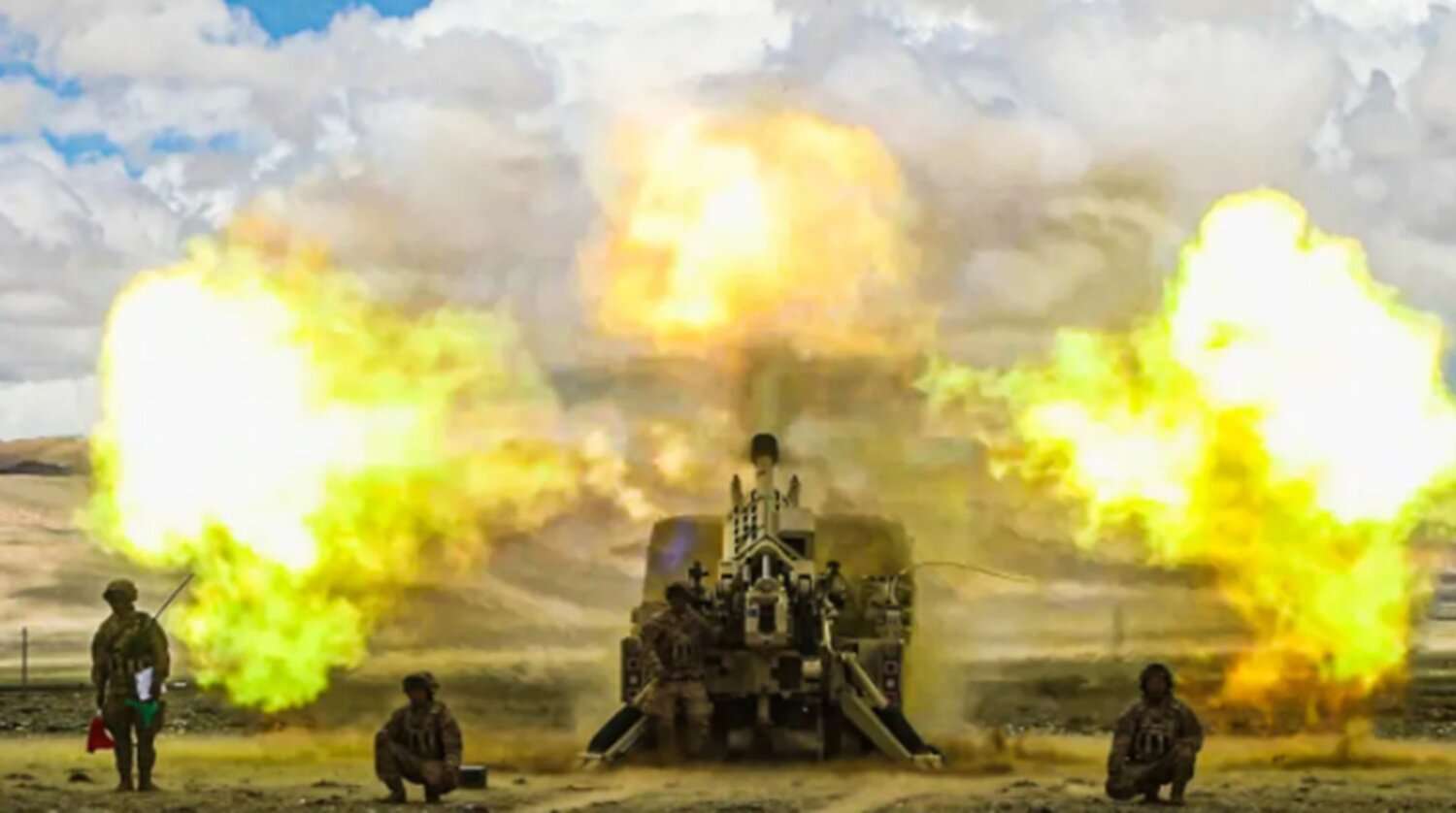
Military exercise of People’s Liberation Army of Tibet Military Region Image source: hk01.com
There are numerous credible reports of large-scale militarisation of these border regions in preparation for the eventual confrontation with the neighboring country of India. These include securitising the Tibetan villages on the border by transforming them into military base camps, forced recruitment of Tibetans in the People’s Liberation Army, military training for the school children during school holidays rooted in propagandist education of defending the national border and promoting stability in Tibet among the local Tibetan.
According to a source in Tibet, Tibetan families in these regions bordering India have been instructed to send their children to compulsory military training beginning from January this year. Source also confided that they have been asked to send one member from every Tibetan family to the People’s Liberation Army. They have also been instructed to send every member of the family for military training except for minor and old age people.
The report of upscaled military recruitment from January onwards also connects with Tibet Watch’s latest report that uncovered the evidence of establishment of Tibet Rong He (Ch:荣和) Military Training Centre (Tib: བོད་ལྗོངས་རུང་ཧུའུ་རྒྱལ་སྲུང་སློབ་གསོའི་བླི་འདྲི་ཀུང་སི།) in January and Young Tibetan Snow Hawk Military Summer Camp for school children, the latter of which is confirmed to be in Nyingtri.
National border defense and frontier security is prioritised as part of China’s policies of so-called “stability maintenance” through the Plan for the Construction of Well-off Villages in the Border Areas of the Tibet Autonomous Region (2017-2020) (Ch: 西藏自治区边境地区小康村建设规划). The expected completion of Lhasa-Chengdu railway in 2026 is bound to further enhance the Chinese government’s objectives of mobilising the military in occupied Tibet. Wang Haijian, Lieutenant of PLA, Deputy Commander(2016-2019) and Commander(since 2019) of Tibet Military District, was recently transferred to East Turkestan’s Xinjiang Military Region

